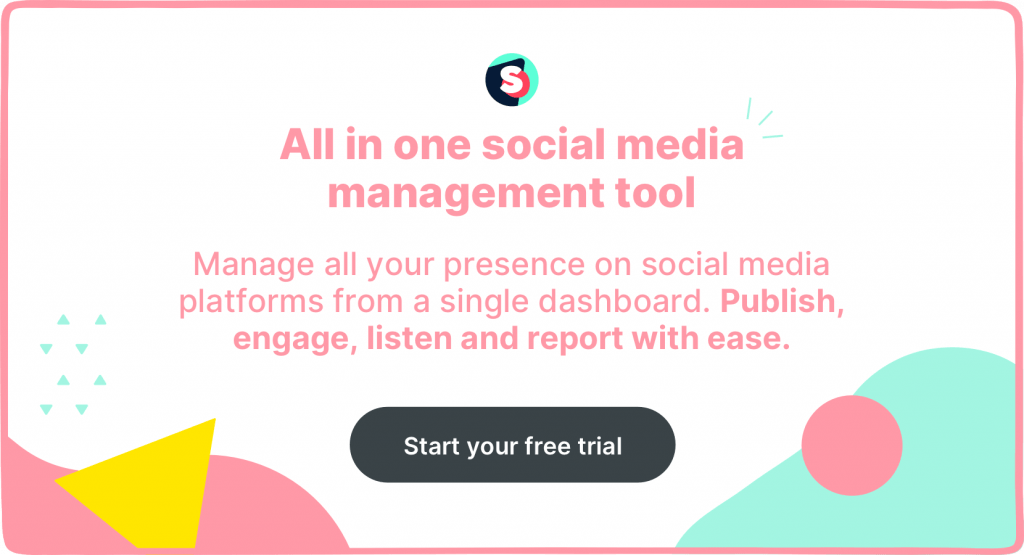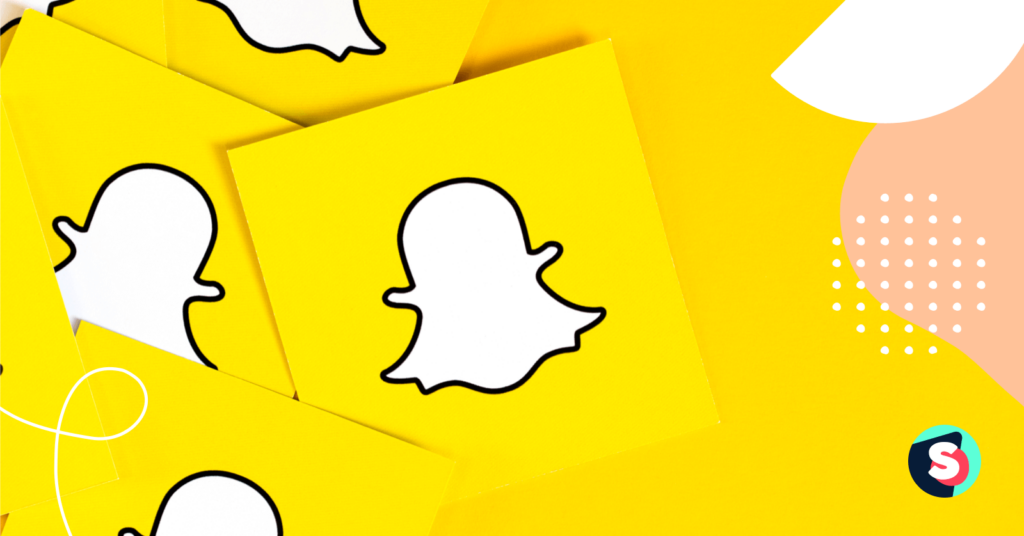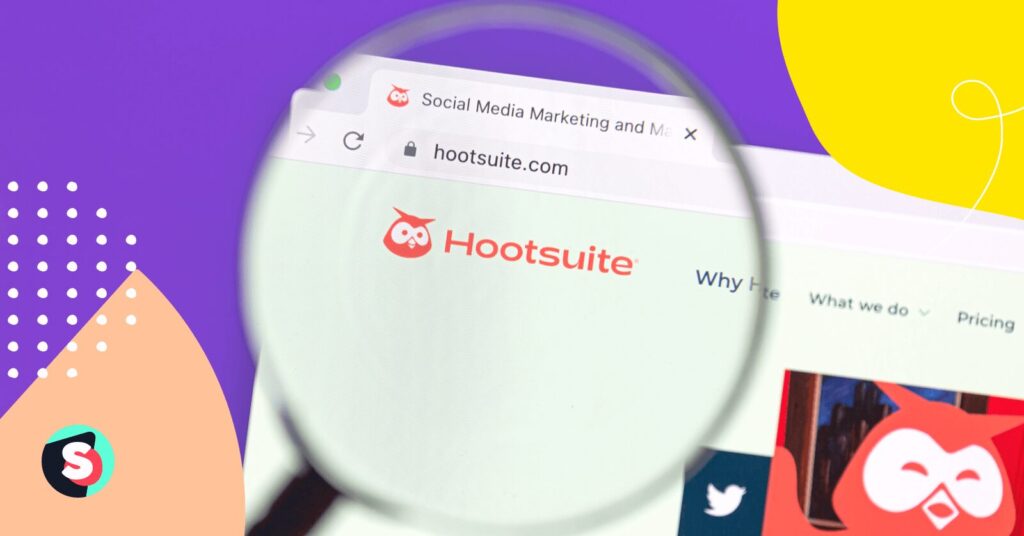Summarize this article via
Side project marketing creates brand awareness and credibility by offering a free product or service. It is a carefully crafted solution that solves your target audience’s needs and directs them to your core product.
“I don’t care how much money you have. Free stuff is always a good thing.” – Queen Latifah.
Although allocating resources into a side project might seem like an expense. However, by bringing value to your audience with a free product, you can build an asset that will generate traffic and leads.
Side-products have proven to be a marketing success. Here are some examples: Buffer’s side-product Pablo, Unsplash.com by Crew and Marketing Grader by Hubspot, and many others. In his famous article about side-project-marketing facts, Ali Mese quotes the golden rule of online marketing from Brian Clark to understand how side projects should link to our core business;
Give Something Valuable Away in Order to Sell Something Related.
Ali Mese defines side-product-marketing as a value that is related to the core business that we build on the side without losing our main focus, and he highlights the most crucial point;
Some of those people who like what we create on the side end up willing to learn more about us, so they check out what our core business is about.
Why did Sociality.io decide to launch a side project marketing?
Sociality.io is a social media marketing management solution. Since 2015 we’ve been slowly increasing our global reach and market share. The journey has been quite experimental, and we’ve tried multiple marketing strategies to improve our brand health.
Since we are a small team, we wanted to invest our time wisely. While discussing the pros and cons of launching a side-project, we realized that we have already been collecting our competitors’ pricing and features monthly into an excel sheet for the marketing research of our product.
It was a light-bulb moment for us. So, we’ve realized that our target audience is also looking for information on comparing existing solutions’ pricing and features.
On the other hand, it was risky since we could potentially redirect our leads to competitors’ tools.
But we would like to take all the risks because transparency has always been our core value. In addition, we knew that any start-up should have enough courage to trust its product if they want to be in the game. The side-project — SMTC was born like this.
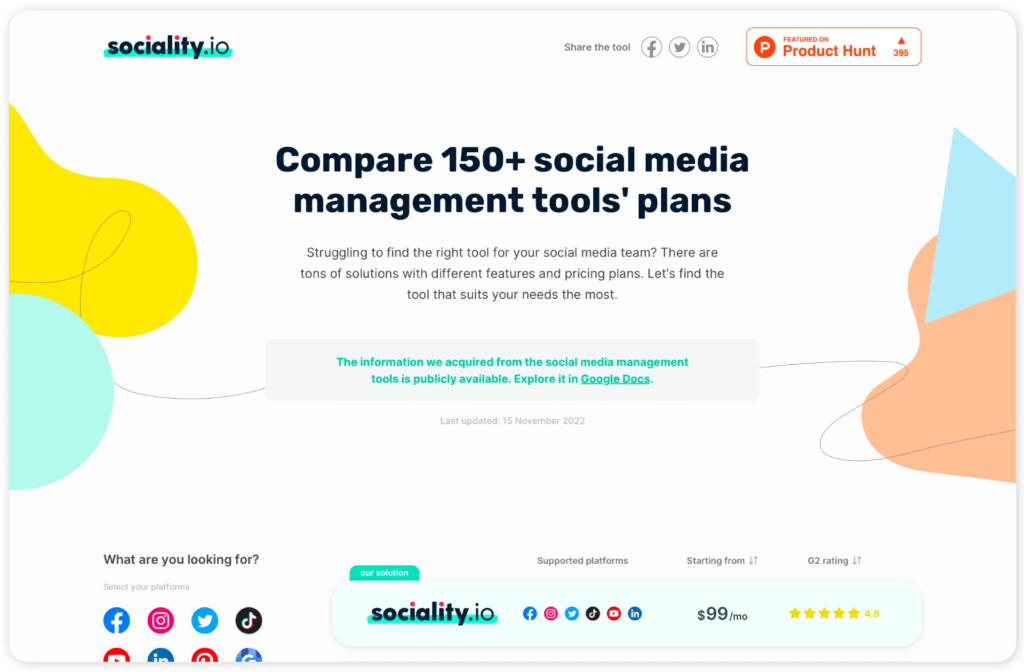
So what happened after launching our side project
Finished day #5 on PH and increased brand awareness
We finished day number 5 at Product Hunt and were upvoted more than 300. Side project helped us to improve brand awareness. After launching at Product Hunt, our side project was mentioned by some of the best influencers in our market, social media blogs, and newsletters.
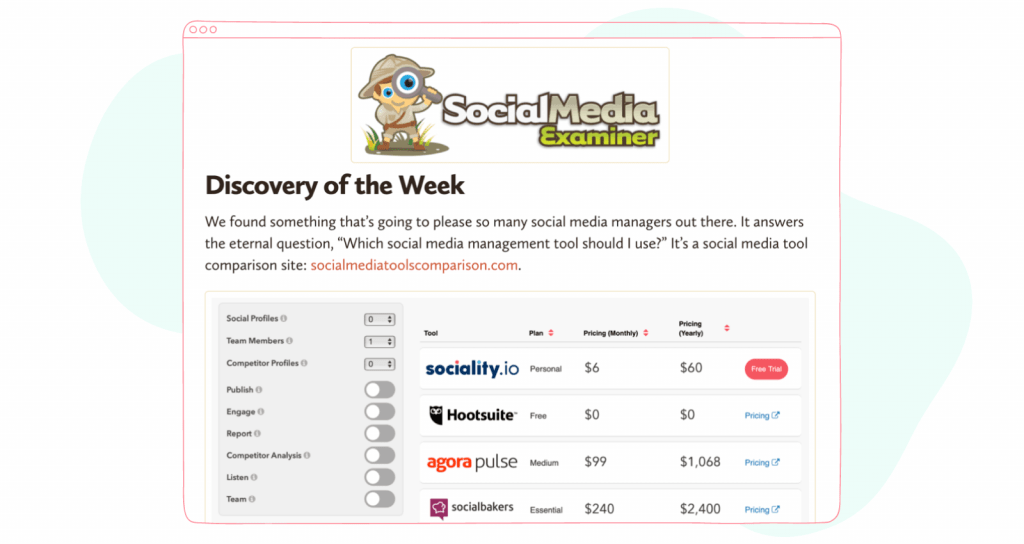
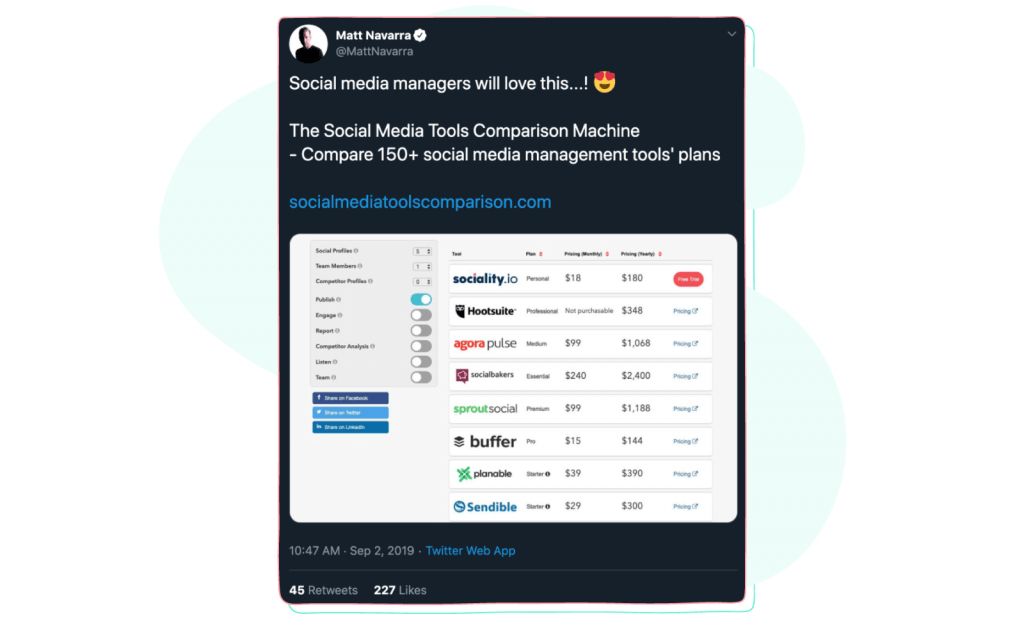
Visited by more than 6.000+ organic users in the first month
In the first month, our side project was visited by more than 6.000 users and got traffic from all around the globe.
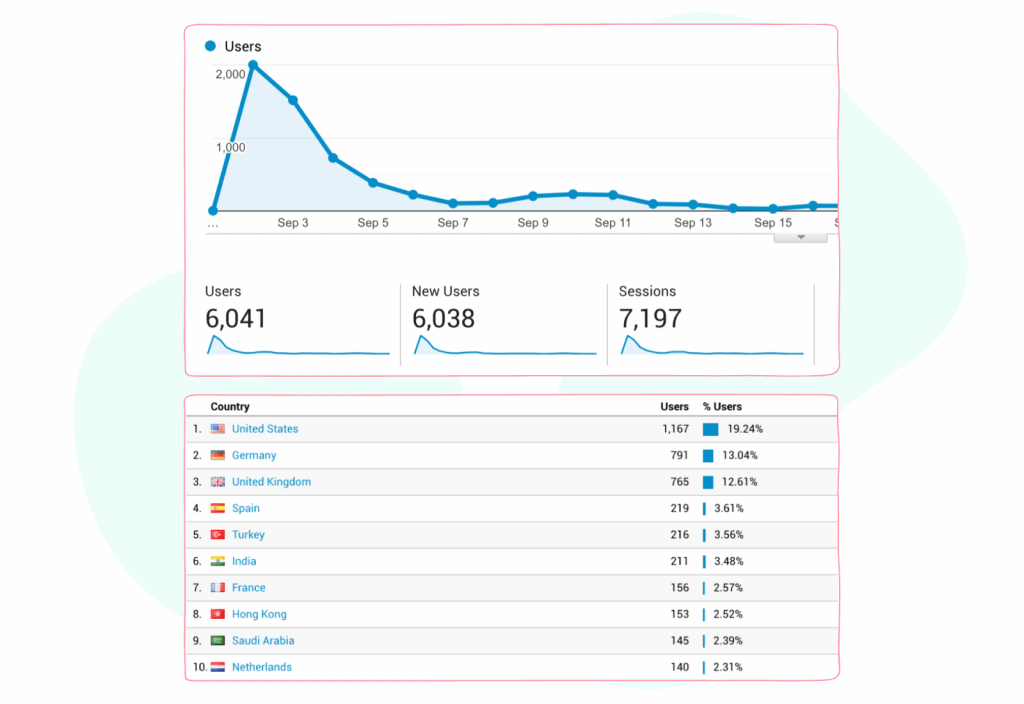
Creating our own lead generation channel
400 of the users visited our main product Sociality.io, and 21 of them registered to our main product. They are the best-fitted customer persona that we are looking for. The bounce rate of these users was low, and the conversion rate was double the average.
We are also getting steady new leads from the side project.
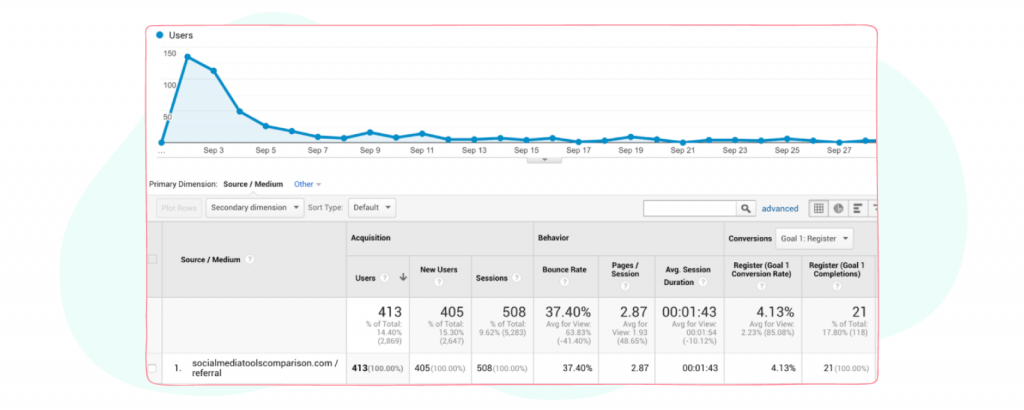
These numbers were good enough for a company of our size. We focused on improving social media management for teams, and launching our first side marketing campaign was a real surprise and, of course, a success for us. The brand awareness and the quality of the traffic that we got from the side project weren’t something that we could buy out.
Opening the Launch Kit Template for side project marketing
So we decided to open the recipe that we used in launching the side marketing campaign. We prepared a Trello Board so you can easily copy and start using it.
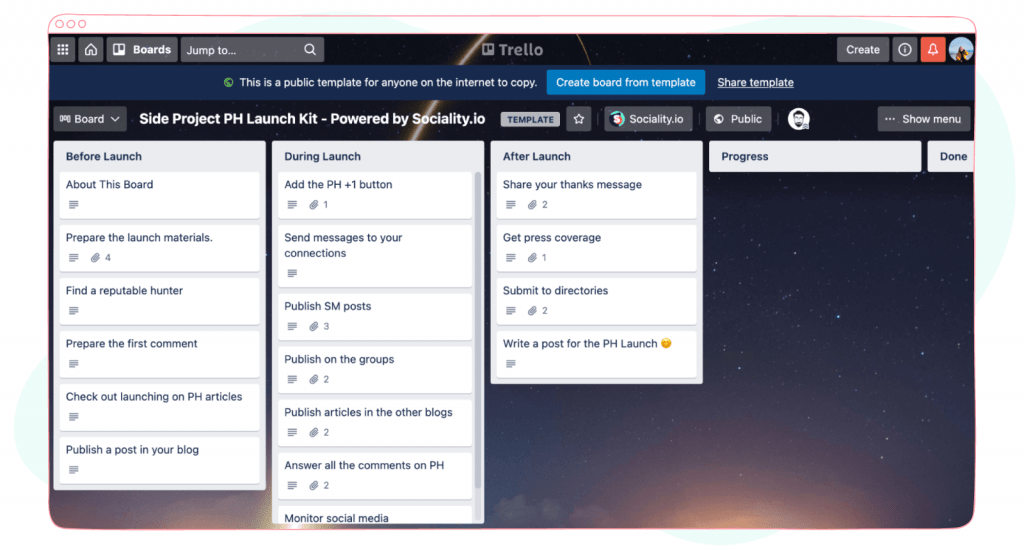
Trello Board: Side Project PH Launch Kit
We also inserted the real materials that we used in our campaign, so it’s easy to understand the main concept and prepare your own campaign around your own needs.
Before side project launch on Product Hunt
1. Prepare the launch materials.
Prepare the text & visual materials for the Product Hunt page and test them at https://previewhunt.com
You need to prepare the name, tag line, link, thumbnail, images, video (if any), and a charming animated GIF 😊

2. Find a reputable hunter
Find a reputable hunter who can launch your product.
You can contact Chris Messina, who invented the Hashtag. He prepared a very smooth process for hunting products.
3. Prepare the first comment
Prepare the first comment you will use on your Product Hunt launch page.
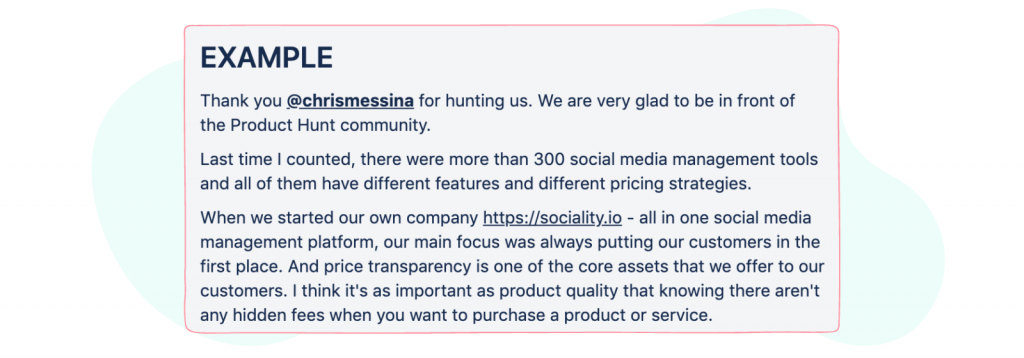
4. Check out launching on Product Hunt articles
Check out articles launching at Product Hunt. You can find good tips and actionable advice:
- How to Launch on Product Hunt 🚀
- The Ultimate Guide To Launching On Product Hunt, Even If You’re Nobody In The Online Space
- Product Hunt 101: How To Launch Your Product From Early Idea To Revenue
- Indie Hackers: How to launch on Product Hunt
5. Publish a post in your blog
Prepare and publish a blog post about the product that you’re launching with a charming title.
You can check out our blog post we published before launching our side marketing campaign: https://sociality.io/blog/compare-150-social-media-management-tools-plans/.
Product Hunt launch day guide
1. Add the Product Hunt +1 button
Add the PH +1 button to your website.

2. Send messages to your connections
Send personal messages/emails to the product users, friends, colleagues, and professional connections and ask help from them to spread the launch on social media and their closed groups. Encourage them to be in the conversation on the Product Hunt page actively.
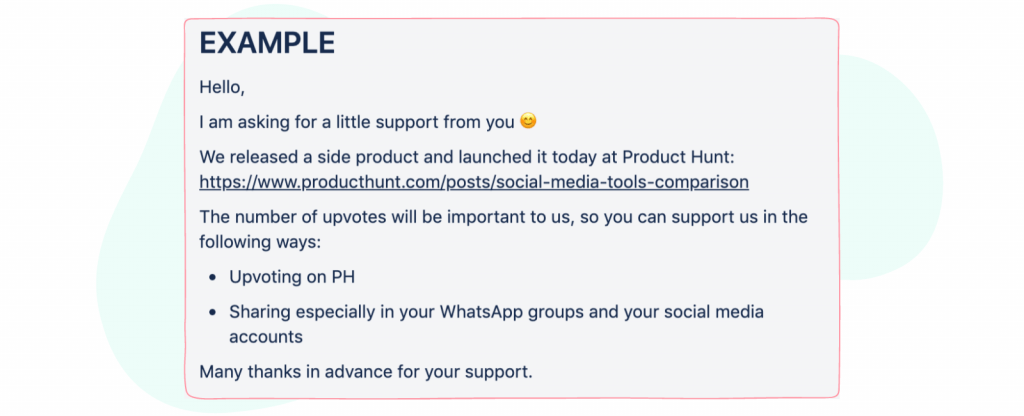
3. Publish social media posts
Publish social media posts through your company’s social networks and also your personal accounts.
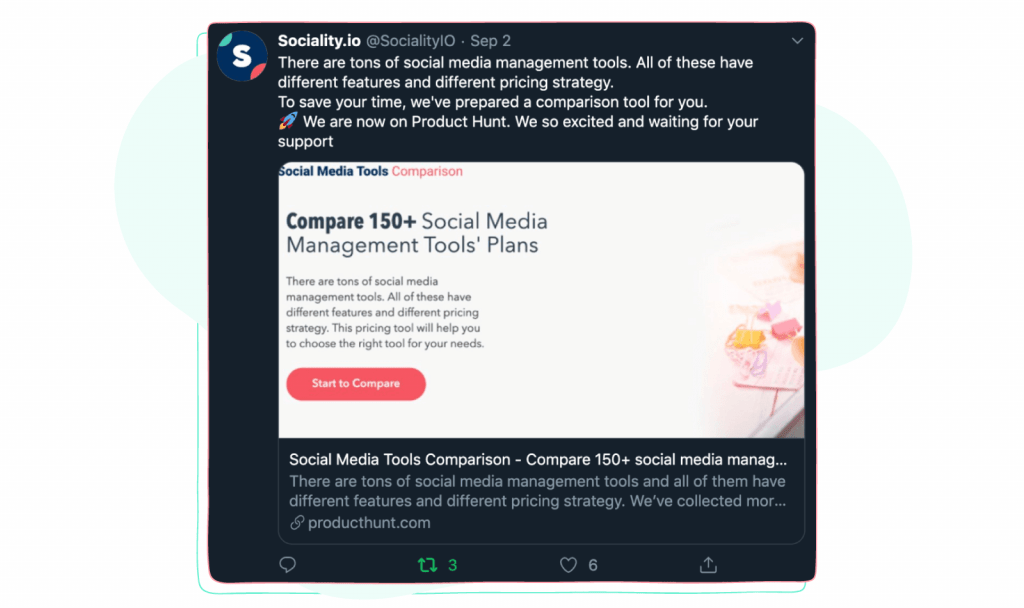
4. Publish on the groups
Publish posts on Facebook, Slack, and LinkedIn groups that you are actively participating in the conversations and ask for help for the Product Hunt launch.
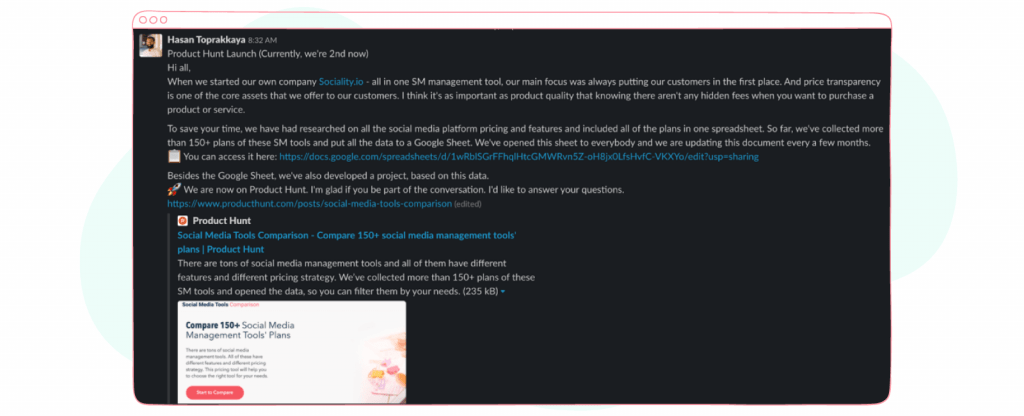
5. Publish articles in the other blogs
Publish the same post you have already written on Medium, Indie Hackers, and other related mediums.
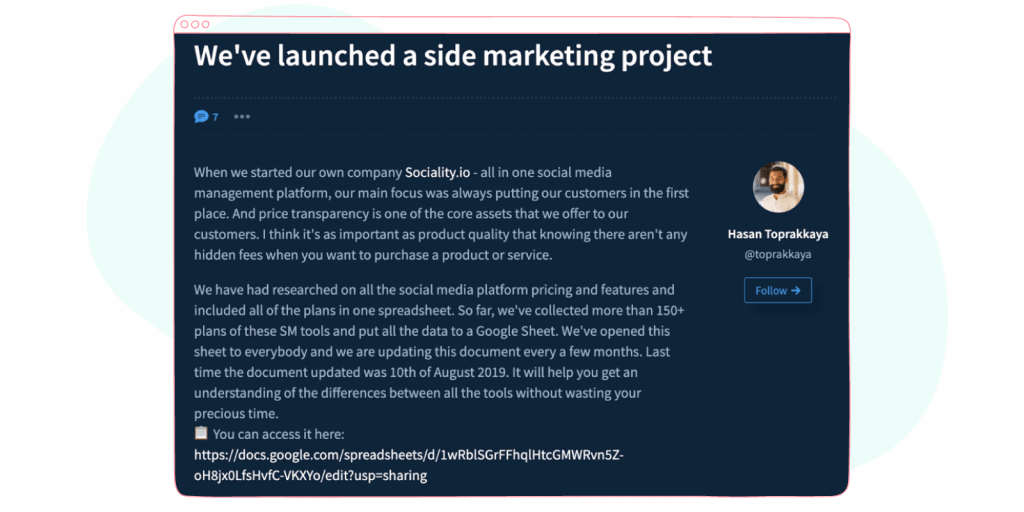
6. Answer all the comments on Product Hunt
In the following weeks, you should come back to PH and answer these comments. Answer all the comments on PH, not only the positive ones. And note all the feedback that you think you can build or implement in the future. It’s very important to show people that you are caring for them. It is a long-term investment. Don’t waste it.

7. Monitor social media
Monitor social media during the launch and the following days. Be responsive to comments, tweets, and DMs. Reply to all of them as soon as possible and share the best ones in your company’s & personal social media networks.

After the launch
1. Share your thanks message
A day after, share your thanks message through your personal & company’s social media networks to people for supporting you through the launch.
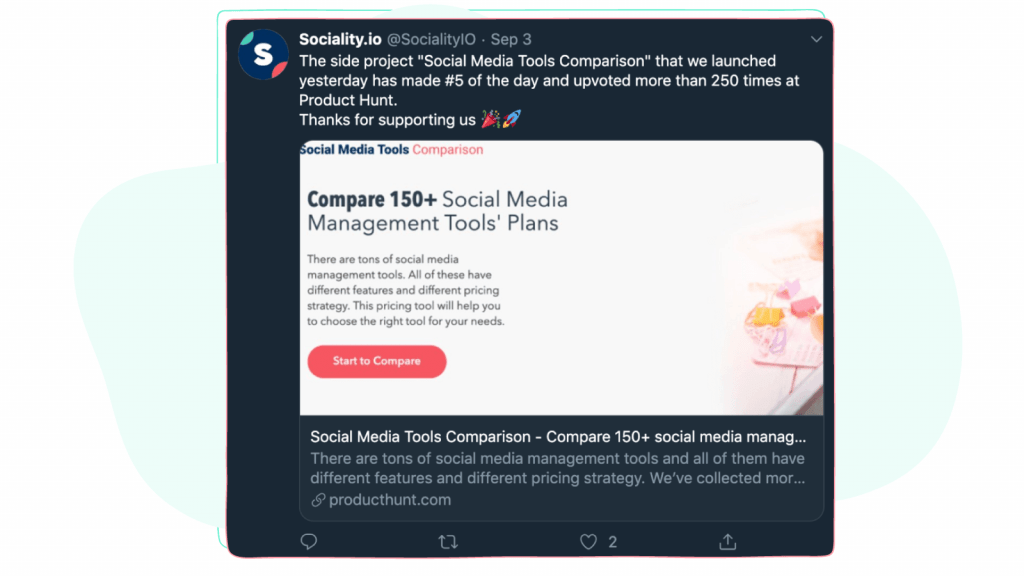
2. Get press coverage
Select at least 20 startup media outlets and send personalized emails as possible to each of them.
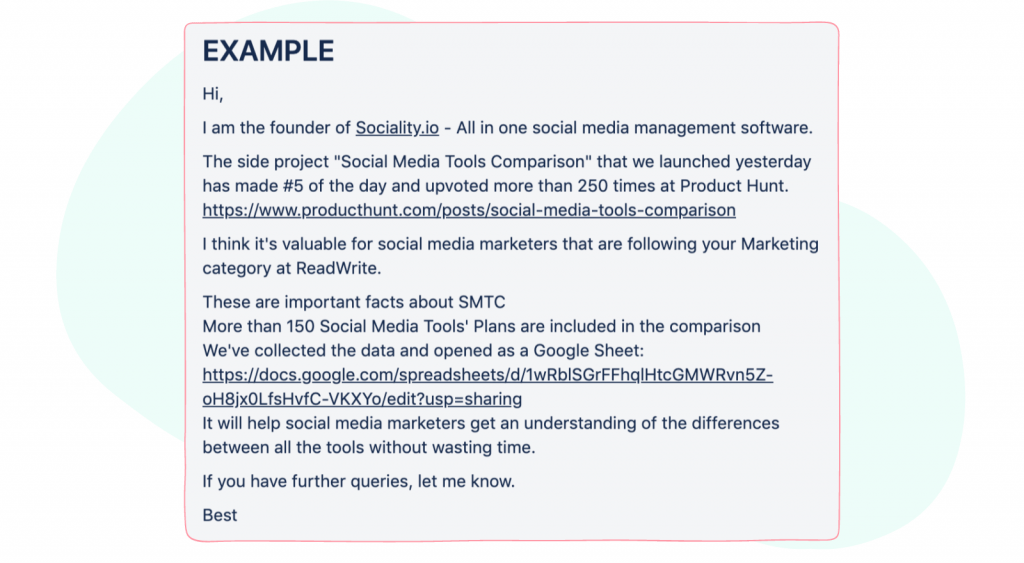
3. Submit to directories
After a week, submit your product to the other list websites that you can leverage from.
You can check out this page for the list of 100+ directories that you can submit your product: https://www.promotehour.com/startup-directories/.
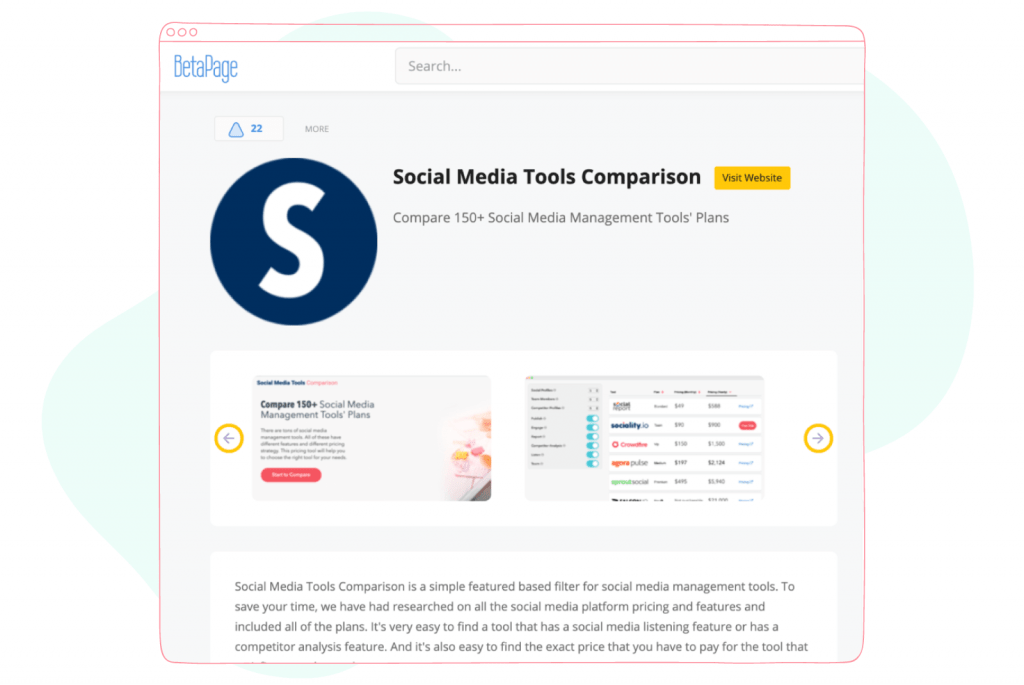
4. Write a post for the Product Hunt Launch 😊
Giving back to the community about the lessons you learned during the launch is always helpful.
5. One more thing
Publish your launch kit at PH and start from the “Before Launch” list again. Just kidding 😄 Please stop here and focus on the product that you’re developing.
2021 Side project marketing update
We launched Social Media Management Tool Comparison in August 2019. Although in two years, it didn’t become a pivotal moment of Sociality.io’s success. However, it became one of our long-term lead generation channels. To this day, with a conversion rate of 5.58%, SMTC consistently generated about 5% of overall conversions each month.
On top of that, the project’s landing page holds top positions for targeted keywords and receives mentions on reputable websites. To us, the most important indicator is users’ feedback. Often in meetings with clients or demo presentations, we hear positive feedback about SMTC.
